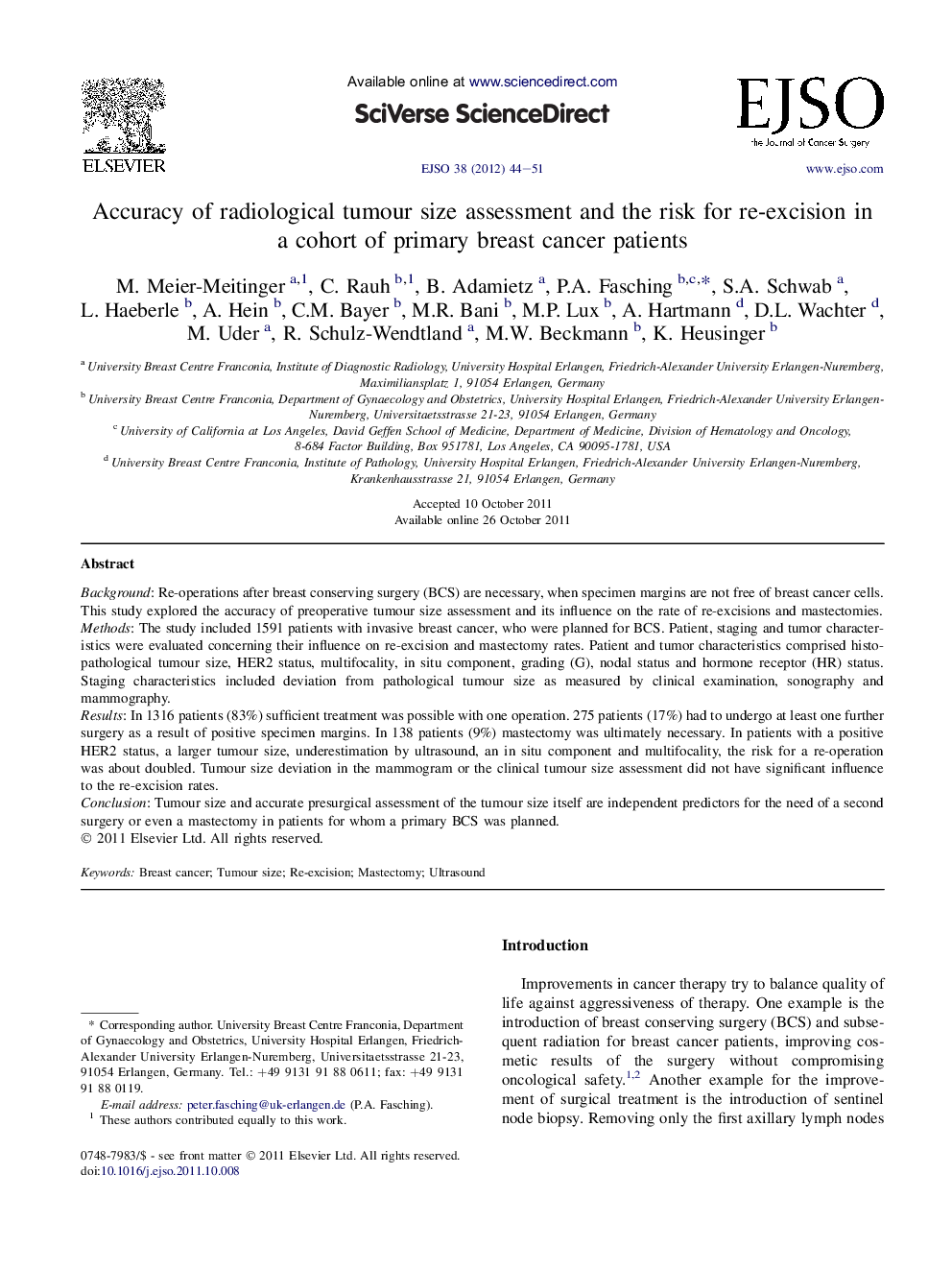| Article ID | Journal | Published Year | Pages | File Type |
|---|---|---|---|---|
| 3986512 | European Journal of Surgical Oncology (EJSO) | 2012 | 8 Pages |
BackgroundRe-operations after breast conserving surgery (BCS) are necessary, when specimen margins are not free of breast cancer cells. This study explored the accuracy of preoperative tumour size assessment and its influence on the rate of re-excisions and mastectomies.MethodsThe study included 1591 patients with invasive breast cancer, who were planned for BCS. Patient, staging and tumor characteristics were evaluated concerning their influence on re-excision and mastectomy rates. Patient and tumor characteristics comprised histopathological tumour size, HER2 status, multifocality, in situ component, grading (G), nodal status and hormone receptor (HR) status. Staging characteristics included deviation from pathological tumour size as measured by clinical examination, sonography and mammography.ResultsIn 1316 patients (83%) sufficient treatment was possible with one operation. 275 patients (17%) had to undergo at least one further surgery as a result of positive specimen margins. In 138 patients (9%) mastectomy was ultimately necessary. In patients with a positive HER2 status, a larger tumour size, underestimation by ultrasound, an in situ component and multifocality, the risk for a re-operation was about doubled. Tumour size deviation in the mammogram or the clinical tumour size assessment did not have significant influence to the re-excision rates.ConclusionTumour size and accurate presurgical assessment of the tumour size itself are independent predictors for the need of a second surgery or even a mastectomy in patients for whom a primary BCS was planned.
